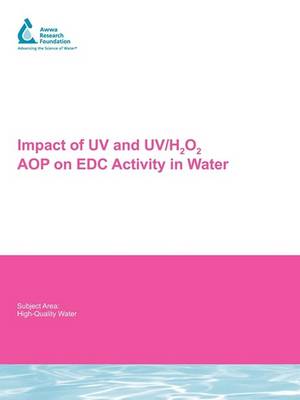Recent scientific studies have indicated that industrial and pharmaceutical chemicals in our water environment at very low levels may have significant impacts on human and environmental health. Many of these contaminants are not removed using conventional water treatment processes. The use of ultraviolet (UV) light for disinfection of water is becoming increasingly common. The use of UV for photolysis and oxidation holds promise as a clean, effective technology for transforming environmental pollutants of concern.
The goal of this research was to assess, through use of bioassays and chemical analyses, the degradation, by-product formation, and subsequent toxicity of endocrine disrupting contaminants (EDCs) following UV and UV/H2O2 oxidation treatment of water. Known EDCs were investigated for treatability and subsequent formation of estrogenic by-products over a range of UV operating points. Evaluations of treatment were made by analytical chemistry and by assessing changes in estrogenic activity utilizing both in vitro and in vivo based assays. UV light alone either from LP or MP sources at low or high UV fluences will not be effective for degradation of the estrogenic chemicals studied, therefore, utilities should not expect any effects on estrogenic contaminants under UV disinfection conditions. For effective treatment of the EDCs studied, and likely others, UV can be used in combination with low levels of hydrogen peroxide to achieve advanced oxidation conditions for destroying parent compounds and residual estrogenic activity.
The use of an estrogen screening assay should complement any chemical analysis when studying treatment processes that result in transformation of an estrogenic parent contaminant to its known or unknown breakdown products. These assays can monitor residual estrogenic activity of any by-products, monitor estrogenic activity for mixtures of pollutants, and provide an end point marker, indicating effective treatment levels.
- ISBN10 1843398311
- ISBN13 9781843398318
- Publish Date 15 February 2008
- Publish Status Out of Print
- Out of Print 2 March 2017
- Publish Country GB
- Imprint IWA Publishing
- Format Paperback
- Pages 136
- Language English
